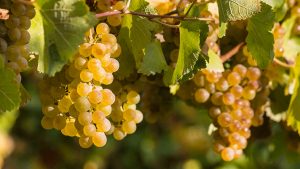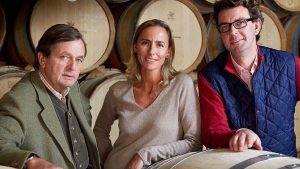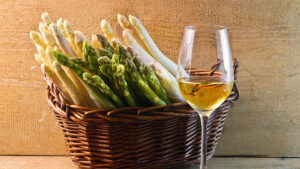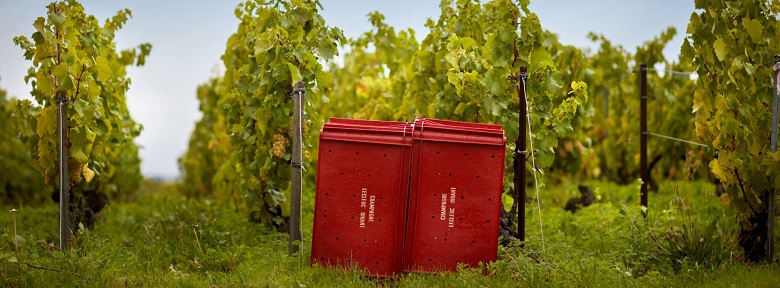
We already know Champagne as a prestigious wine region, but it has undergone a wonderful renewal in recent years. This is largely thanks to a new generation of vignerons who are tuned into environmental questions and wish to craft wines that reflect the character of their terroir. Today, we’re heading to Maison Leclerc-Briant to find out their role in all of this.
Once upon a time, the Leclerc family…
The history of this estate dates all the way back to 1872, when it was founded by Lucien Leclerc in Cumières. Later taken up by Bertrand Leclerc and his wife, Jacqueline Briant, the property became a trading house in 1955. The owners were quick to take up organic growing as their primary method, a decision that their son Pascal furthered in the 1980s by converting the vineyard to biodynamic. In no time at all, Pascal Leclerc became one of the first of the region’s vignerons to craft single-parcel cuvées, thus proving the true potential and beauty of its terroirs.
Winds of change from the west
Unfortunately, Pascal Leclerc-Briant was not long for this world, and the property didn’t stay in family hands for very long. Fortunately, the Dupré-Nunnellys took a shine to the property and the American couple became its happy owners in 2012.
They called on the talents of oenologist Hervé Jestin and conferred the management of the property to Frédéric Zeimett. Together, they’ll be the first to admit it: this renewal didn’t come easy. The passing of Pascal Leclerc-Briant had seen the estate’s vines sold off to Roederer and Bruno Paillard. This left them faced with a blank page – or almost, since what remained of the house’s 30 hectares was a single, little parcel. Hervé Jestin and Frédéric Zeimett thus turned to vignerons like Olivier Horiot, Hugues Godmé, Barbichon, and David Leclapart, all of whom are well-reputed for their organic and/or biodynamic work. Over time, they acquired new vines that now cover 9 hectares of land, mainly planted with Pinot Noir, Pinot Meunier, and Chardonnay vines.
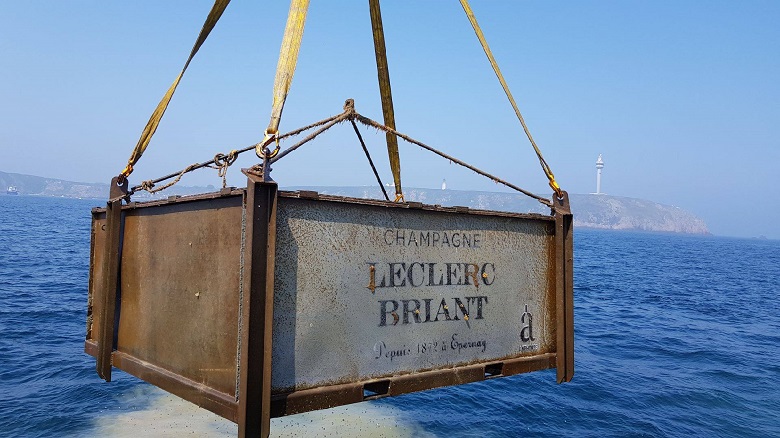
Innovation abound
Thanks to this ambitious duo, Maison Leclerc-Briant has affirmed its commitment to biodynamic production, natural vinification, and innovation. It was after moving away from his role as CEO of Maison Chapoutier from 2009 to 2011 that Frédéric Zeimett found his way to biodynamics, seeing how much these methods can ennoble a wine.
But innovation doesn’t stop there, since there are always experiments being carried out at the estate. The Abyss cuvée, for example, was submerged 60 metres in the sea off Brittany’s island of Ouessant for 15 months. Meanwhile, La Croisette is matured in wood, terracotta eggs and stainless steel and gold containers.
All of this work has drawn their organic wines from the ashes. With very few additives or sulphites, the cuvées have a strong personality, precise and lively, which is winning over an increasing number of tasters.
Having reached such a high level in terms of quality, we’re wondering whether the Maison could get even better. From what we can tell, the owners are not ones to rest on their laurels…as is clear in their recent acquisitions in the Côte Chalonnaise (22 hectares in Rully) and Côte de Beaune (Clos de la Commaraine in Pommard).
So, to all fans of fizz, if you’re looking for a property concerned with the preservation of its history as well as a desire to excel in innovation, this Champagne house will be right up your street! When we got the chance to meet Frédéric Zeimett, we found the wine absolutely splendid! The precision, finesse, and purity of these wines completely transported us, and we hope they’ll have the same effect on you!
Leclerc-Briant wines available on iDealwine
- Brut Réserve: A beautiful balance between freshness, fruity volume, the length of the flavours and a saline finish – it’ll make any dinner sparkle!
- Premier Cru Extra-Brut: A premier cru crafted from a blend of 70% Pinot Noir, 15% Pinot Meunier and 15% Chardonnay.
- Rosé Extra Brut: This blended rosé (93% Chardonnay and 7% Pinot Noir vinified as a red wine and aged in wooden barrique barrels) is complex, fresh and vinous.
- Rosé de Saignée Extra Brut: This rosé de saignée is a flavourful, vinous and deep-coloured Champagne.
- Blanc de Blancs Millésimé Extra Brut: The quintessence of Chardonnay from a fine vintage!
- Cuvée Divine Solera Extra-Brut: The finesse of Cuvée Divine Solera is reflected in its impressive flavour profile. It is heightened by its perfect balance which comes from the fact that the vintage was blended in a solera system with several other mature vintages.
- Brut Nature Grand Blanc: Finesse and exceptional, these are the two words chosen by the Champagne house to describe one of its most prestigious cuvées.
- Brut Zéro Abyss: A fine Champagne with an atypical ageing technique. Submerged in the sea for 15 months at a depth of 60 metres, it reveals a richness and aromatic precision that is reminiscent of the ocean.
- Château d’Avize Blanc de Blancs Brut Zéro: Ageing in wooden barrels gives the wine a depth of palate magnified by the wonderful minerality which comes from the chalky terroir where it started its life.
- La Croisette Millésimé: The aromatic complexity of this rich and elegant Blanc de Blancs, which starts life in a plot located in Epernay, will seduce you. The ageing process used to craft it is unusual, to say the least!

